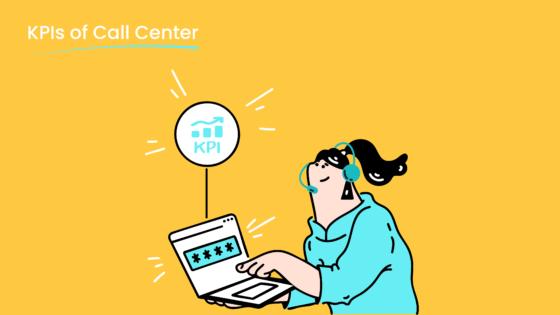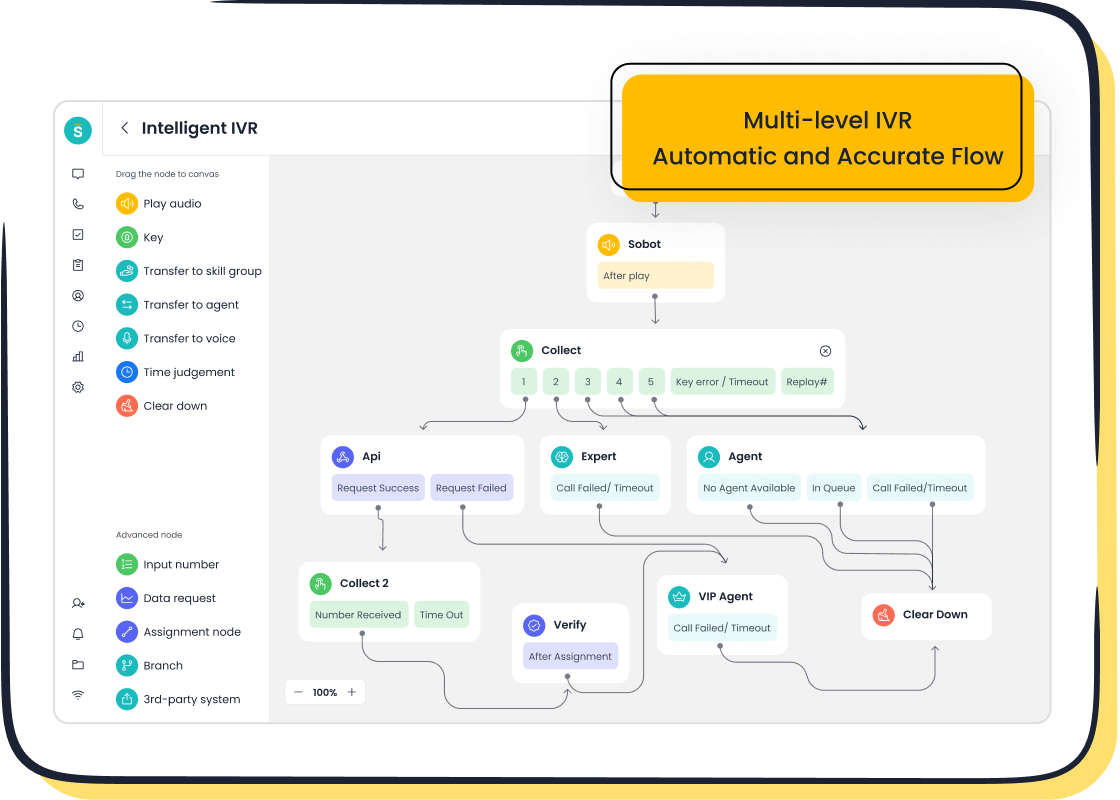Simple Methods to Enhance Customer Service Quality Control

The simplest way to enhance quality control customer service is by taking small, practical steps that you can start today. For example, use clear employee training, automation tools, and regular feedback to boost results. Many teams, including those using Sobot AI and the Sobot call center, see quick improvements with these actions. In fact, 76% of agents say companies now connect quality data to customer service satisfaction.
| Statistic | Description |
|---|---|
| 61% | Agents report organizations measure error accuracy in QA programs. |
| 76% | Companies now link QA data with customer satisfaction. |
| 28% | Automated QA with AI coaching improves feedback loops. |
Set Clear Standards for Customer Service
Setting clear standards is the foundation of quality control customer service. When you define what good service looks like, you help your team deliver a consistent experience. Customers know what to expect, and your agents understand how to meet those expectations every time.
Define Service Expectations
Start by identifying what matters most to your customers. You can use industry standards as a guide. Here are some widely recognized standards for customer service quality:
| Standard Name | Description |
|---|---|
| ISO 9000 family | The world's best-known standard for quality management systems. |
| ISO 9001 | Sets requirements for a quality management system to meet customer needs. |
| GMP | Ensures products are produced and controlled to quality standards. |
| GLP | Maintains integrity in non-clinical laboratory studies. |
| IATF 16949 | Focuses on quality management in the automotive sector. |
| IAQG 9100 | Addresses quality management in aerospace and defense industries. |
You should also look at your own customer feedback and business goals. For example, Sobot helps you unify communication across channels, making it easier to set and track service standards. Samsung, a Sobot client, used unified standards to boost agent efficiency by 30% and reach a 97% customer satisfaction rate (source).
Communicate Standards to Teams
Once you set your standards, share them clearly with your team. Use templates and canned replies to ensure everyone responds in a consistent way. Encourage a friendly tone and quick responses. Sobot’s omnichannel solution lets you keep all communication in one place, so your team always has access to the latest quality assurance guidelines. This approach supports consistency, even when customers switch between channels.
Consistency in communication builds trust and helps your team deliver excellent customer service every time.
Align with Customer Satisfaction Goals
Make sure your standards match what your customers expect. When you align service levels with customer needs, you see higher satisfaction scores. Research shows that consistent service can increase customer satisfaction by up to 23%. Sobot’s unified workspace helps you track these results and adjust your approach as needed. Good customer service leads to loyalty and more recommendations.
Use Customer Feedback for Quality Assurance Best Practices
Customer feedback is a powerful tool for improving quality control customer service. When you listen to your customers and act on their input, you create a cycle of learning and growth. This ongoing feedback loop helps you set and refine quality assurance best practices, making your customer service stronger over time.
Collect Feedback Efficiently
You can gather feedback from many channels. Sobot’s omnichannel solution makes this easy by bringing together feedback from email, SMS, social media, in-app forms, and your website into one unified workspace (learn more). Here are some effective ways to collect feedback:
- Email surveys reach a wide audience and are cost-effective.
- SMS is quick and works well for short surveys like Net Promoter Score (NPS).
- Social media and review sites let you listen to what customers say in real time.
- In-product and in-app feedback tools capture immediate reactions.
- Website forms and web intercepts gather insights from visitors.
- Interviews and focus groups provide deeper understanding, though on a smaller scale.
With Sobot, you can customize surveys, automate feedback collection, and analyze results across all channels.
Turn Insights into Action
Collecting feedback is only the first step. You need to turn these insights into real improvements. Start by setting clear quality assurance guidelines and metrics. Use Sobot’s analytics to evaluate a sample of customer interactions and spot trends. Deliver feedback to your team quickly so they can adjust their approach. Involve your agents in the process to build trust and engagement. When you connect quality assurance metrics to business outcomes, you show the value of your efforts.
Tip: Use AI-driven insights from Sobot to analyze large volumes of feedback and identify areas for coaching or training.
Foster Continuous Improvement
Continuous improvement is key to customer service quality. When you act on feedback, you show customers that you value their opinions. Businesses that maintain regular feedback loops see up to a 15% higher customer retention rate. Acting on feedback can also boost sentiment scores by 33%. This approach builds loyalty and makes customers feel like partners in your success. Sobot’s omnichannel solution supports this process by capturing every interaction and helping you track progress over time.
By integrating customer feedback into your quality assurance best practices, you create a culture of learning and growth. This leads to higher customer satisfaction and better service for everyone.
Monitor and Review Call Center Quality Assurance
Monitoring and reviewing your call center interactions is one of the most effective ways to improve quality control customer service. When you keep a close eye on calls and chats, you can spot trends, address issues quickly, and make sure every customer receives the best possible experience. This process helps you maintain high customer service quality and supports continuous improvement in your team.

Real-Time Monitoring with Sobot Voice/Call Center
Sobot Voice/Call Center gives you powerful tools for real-time call monitoring and analytics. You can supervise calls as they happen, track agent performance, and review call data instantly. This helps you catch problems early and provide immediate support to your team. Here are some features that make Sobot Voice/Call Center stand out:
| Feature | Benefit |
|---|---|
| Real-time monitoring | Enables efficient supervisory management. |
| Call recording and monitoring | Lets you review calls for training and quality assurance. |
You can use these tools to ensure your team follows quality assurance guidelines and delivers consistent service. Real-time insights help you make quick decisions and keep your call center running smoothly. For more details, visit the Sobot Voice/Call Center page.
Evaluate Key Interactions
To get the most value from call center quality assurance, you should evaluate key customer service interactions. Focus on calls and chats that matter most, such as those with complaints or complex issues. Use clear criteria to measure performance:
| Criteria | Description |
|---|---|
| Communication Skills | Assess clarity, tone, and active listening. |
| Product Knowledge | Check understanding of product features and benefits. |
| Problem-Solving Ability | Measure how well agents resolve customer issues. |
| Adherence to Protocols | Ensure compliance with company policies and procedures. |
| Call Documentation | Emphasize accurate record-keeping for future reference. |
You can also track quality assurance metrics like Customer Satisfaction Score (CSAT), Customer Effort Score (CES), and Net Promoter Score (NPS). These numbers show how well your team meets customer needs and follows quality assurance best practices.
Share Results with Teams
Sharing quality assurance results with your team is key to building a culture of learning and growth. When you review call monitoring data together, you help agents see their strengths and find areas to improve. This approach leads to better agent performance and more consistent service. Here are some proven outcomes:
- Reduces customer churn by improving interaction effectiveness.
- Enhances customer acquisition through positive word-of-mouth.
- Unifies your brand voice across all channels.
- Increases agent satisfaction and engagement.
Set up regular feedback loops, review conversations, and hold one-on-one meetings to discuss results. This process supports continuous improvement and helps your team deliver top-notch customer service every day.
| Benefit | Description |
|---|---|
| Improved Customer Experience | Identifying and addressing customer pain points leads to higher satisfaction and loyalty. |
| Better Agent Performance | Regular monitoring and feedback empower agents to improve skills and job satisfaction. |
| Consistent Service Quality | Ensures adherence to quality standards across all interactions. |
| Improved Regulatory Compliance | Helps ensure compliance with company policies and regulations to avoid penalties. |
| Informed Decision-Making | Provides data-driven insights into performance and behavior for better decision-making. |
By using Sobot Voice/Call Center for call recording and monitoring, you can make sure your quality assurance best practices lead to real results for your business and your customers.
Provide Coaching and Support for Customer Service Teams

Regular coaching plays a vital role in maintaining quality control customer service. You help your team grow by offering guidance and support. Coaching based on data analysis leads to better service and motivates agents to reach their goals. When you set clear objectives and review coaching sessions, you create a path for continuous improvement.
Quick Coaching Techniques
You can use several quick coaching techniques to boost your team’s performance. The most effective methods focus on personal growth and skill-building. Here is a table showing popular coaching strategies:
| Technique | Description |
|---|---|
| Micro-coaching | Celebrate top performers and mentor those who need help. |
| 1:1 Coaching Sessions | Address specific needs in a private setting. |
| Use of Data | Bring real-time metrics into coaching talks. |
| Purposeful Sessions | Focus each session on a clear goal. |
| Positive Start | Encourage agents to do their best. |
| Customer Feedback | Use feedback to guide training topics. |
| Agent Empowerment | Teach agents to take charge of their service. |
| Engaging Training | Make learning fun and interactive. |
Team coaching also reduces workplace conflicts and increases engagement. You can use Sobot’s unified workspace to track agent performance and deliver targeted coaching. This workspace brings together call data, chat history, and feedback, making it easy to spot areas for improvement (learn more).
Structured Feedback Systems
A structured feedback system helps you maintain consistent agent performance. When you provide constructive feedback, you help agents improve their skills and build accountability. Sobot’s platform lets you standardize evaluations and track trends across your team. Regular feedback changes how agents view their work and motivates them to improve. Customizing feedback systems ensures you get the best results for your team. Studies show that regular feedback works best in stable environments, but as agents learn, the impact may decrease.
Tip: Use Sobot’s analytics to deliver feedback quickly and keep your team focused on quality.
Align Performance with Customer Satisfaction
Aligning agent performance with customer satisfaction metrics creates a positive feedback loop. You encourage agents to focus on improving customer interactions. Recognizing achievements boosts morale and motivates your team to deliver excellent customer service. Sobot’s unified workspace makes it easy to connect performance data with satisfaction scores, helping you see the impact of coaching. Samsung’s story shows how coaching and support led to a 97% satisfaction rate and a 30% increase in agent efficiency (source). This approach builds a supportive environment and drives continuous improvement in service quality.
Leverage Technology for Quality Control Customer Service

Technology gives you powerful ways to improve quality management in customer service. Sobot’s ai-powered tools help you automate tasks, analyze data, and connect systems for a seamless experience. You can use these solutions to boost efficiency, reduce costs, and deliver better service to your customers.
Automate QA Processes with Sobot
You can automate quality assurance (QA) processes using Sobot’s AI-powered chatbot, voicebot, and unified workspace. These tools handle repetitive tasks like ticket routing, conversation summarization, and feedback collection. Automation lets you gather data from nearly every call and chat, so you get accurate assessments and more coaching opportunities for your team.
| Evidence Description | Key Benefit |
|---|---|
| Automating QA practices gathers data from nearly 100% of calls. | More accurate assessments and better coaching for agents. |
| AI identifies key behaviors and performance trends across all conversations. | Objective insights without time-consuming manual reviews. |
| The platform automates tasks like summarizing conversations. | Increases productivity for contact center managers and agents. |
Sobot’s AI Agent and voicebot can rate agent performance against scorecards, giving you a fair and consistent picture of support quality. You save time and resources while improving the accuracy of your QA program. Learn more about Sobot’s automation features at Sobot Voice/Call Center.
Use Analytics for Improvement
Analytics tools help you find areas to improve in your customer service. Sobot’s unified workspace collects and analyzes customer feedback, call data, and chat history. You can monitor real-time performance and see how well your team meets quality standards.
- Analytics tools provide insights through data analysis.
- Real-time monitoring ensures adherence to quality standards.
- Collecting and analyzing feedback reveals strengths and areas for improvement.
- Predictive analytics forecasts future buying behaviors.
Sobot’s platform uses AI to spot trends and key behaviors, so you can coach agents and adjust processes quickly. This leads to higher customer satisfaction and better quality management. You can track metrics like CSAT and NPS to measure progress.
Integrate with Existing Systems
Sobot makes it easy to connect your customer service tools with existing systems like CRM, ticketing, and e-commerce platforms. Integration helps you unify data, streamline workflows, and avoid switching between apps. You get a complete view of every customer interaction.
| Benefit | Description |
|---|---|
| Efficiency | AI automates repetitive tasks, allowing teams to focus on strategic planning. |
| Cost Reduction | Automation reduces the need for extensive resources, lowering operational costs. |
| Accuracy | AI algorithms minimize overlooked defects and enhance process efficiency. |
| Customer Satisfaction | Improved quality control leads to better service, enhancing overall customer satisfaction. |
Sobot’s integration capabilities support fast deployment and secure data transfer. You can scale your operations and maintain high service quality as your business grows. Explore Sobot’s omnichannel solution at Sobot Omnichannel.
Tip: Leveraging technology in customer service helps you deliver consistent, high-quality experiences while saving time and money.
Review and Adjust for Better Customer Satisfaction
Continuous improvement in customer service starts with regular review and adjustment. You need to check your progress often to keep customer satisfaction scores high and build loyalty. Sobot’s analytics and reporting tools help you track every change and see how your team performs over time. You can find more about these features on Sobot’s official website.
Schedule Regular Reviews
Set up review sessions on a routine basis. Weekly or monthly reviews work best for most teams. Frequent feedback helps you spot problems early and keeps your service fresh. Over two-thirds of customers ignore reviews older than 90 days, so up-to-date reviews matter. You should involve your team and other stakeholders in these sessions. Use Sobot’s reporting dashboard to view recent customer interactions and feedback.
- Hold regular meetings to discuss progress.
- Keep reviews short and focused.
- Invite input from agents and managers.
Make Data-Driven Adjustments
Use data to guide your changes. Sobot’s analytics let you see patterns in customer behavior and service quality. You can spot friction points, track where customers leave, and find root causes of problems. Automation helps you act fast and keep processes consistent.
| Method | Description |
|---|---|
| Pattern Recognition | Find recurring issues and shifts in customer needs. |
| Path Analysis for Churn Prevention | Detect where customers drop off and fix pain points. |
| Cause-and-Effect Analysis | Uncover reasons for dissatisfaction or inefficiency. |
| Opportunity Prioritization | Focus on changes that have the biggest impact. |
| Monitor CX Metrics | Watch scores like CES and repeat purchase rates. |
Measure Impact on Customer Service
Track the results of your changes using reliable metrics. Sobot’s reporting tools show you scores like CSAT, CES, and NPS. You can also monitor first response time, resolution rates, and ticket volume.
| Metric | Description |
|---|---|
| Customer Satisfaction (CSAT) | Shows how happy customers are with your service. |
| Customer Effort Score (CES) | Tells you how easy it is for customers to get help. |
| Net Promoter Score (NPS) | Measures how likely customers are to recommend your service. |
| Social media metrics | Tracks engagement and sentiment online. |
| Customer churn | Counts how many customers stop using your service. |
Tip: Start with one or two methods, then expand as you see results. Small changes can lead to big improvements in customer satisfaction.
You can enhance quality control customer service by setting clear standards, using customer feedback, monitoring interactions, coaching teams, leveraging technology, and reviewing progress. Small, consistent actions—like improving onboarding or setting clear expectations—boost customer satisfaction and loyalty.
| Problem | Diagnosis | Solution | Results |
|---|---|---|---|
| Poor service scores | Slow complaint resolution | QA program and troubleshooting training | Resolution times halved, satisfaction up 25% |
- Companies see CSAT scores rise by 10 points with better onboarding.
- Clear expectations and small delights increase loyalty.
- Leadership support and standardized training help overcome barriers.
Start with one or two methods today. Share your progress and inspire others to improve customer service quality!
FAQ
What is a quality assurance program in customer service?
A quality assurance program helps you set clear guidelines for your team. You use it to review customer interactions and improve service. Call center quality monitoring is part of this program. You track calls and chats to make sure agents follow your guidelines.
How does call center quality monitoring work?
You use call center quality monitoring to check agent performance. You listen to calls, review chats, and compare them to your guidelines. This process helps you spot problems early. You can use Sobot’s tools to automate monitoring and keep your quality assurance program strong.
Why are guidelines important for a quality assurance program?
Guidelines show your team what good service looks like. You use them to train agents and set goals. In a quality assurance program, guidelines help you measure success. Call center quality monitoring checks if agents follow these guidelines every day.
How can I improve my quality assurance program with Sobot?
You can use Sobot’s call center quality monitoring tools to track every call. You set guidelines for agents and review their work. Sobot’s analytics help you find trends and improve your quality assurance program. You get real-time feedback and keep your service consistent.
See Also
Essential Strategies for Effective Call Center Quality Management
Ten Strategies to Enhance Live Chat Customer Experience
Comprehensive Overview of Call Center Quality Management Systems
Navigating Call Center Quality Assurance Software Solutions
Improving Call Center Efficiency Through Effective Monitoring Techniques
